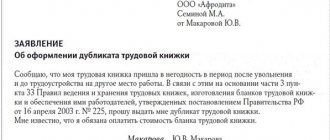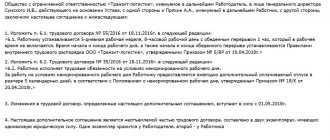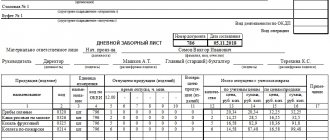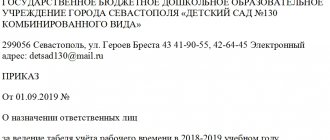These general rules apply to “paper” document flow. Some specific aspects of tax accounting for expenses in electronic document management are clarified, namely, on which of the dates contained in the electronic primary document expenses should be recognized.
The procedure for accounting for income tax expenses when applying the accrual method is established by Article 272 of the Tax Code of the Russian Federation. The law does not establish separate rules for the recognition of costs confirmed by electronic primary documents.
Justification of expenses
For one or another type of company expenses there must be documents that confirm them. If the costs include the cost of materials, these are invoices for posting, a purchase and sale agreement (if it was concluded in writing), and invoices. If the costs include certain services of a production nature, this is a contract and an act of their delivery and acceptance. For travel expenses, these are travel documents, orders for sending on a business trip, etc.
The list of production and sales costs given in the Tax Code of the Russian Federation is not closed.
Expenses that are not included can also reduce a company's profit. The main thing is that the costs are documented and economically justified, that is, related to the generation of income (clause 1 of Article 252 of the Tax Code of the Russian Federation).
Economically justified costs can be considered primarily those without which it is impossible to fulfill a particular contract. As stated in Article 432 of the Civil Code of the Russian Federation, the following are essential:
- conditions on the subject of the contract (for example, performance of work, purchase and sale of property or leasing it, etc.);
- conditions that are named in the law as necessary for a contract of one type or another (for example, a list of essential conditions of an insurance contract is given in Article 942 of the Civil Code of the Russian Federation, trust management of property - in Article 1016 of the Civil Code of the Russian Federation, etc.);
- other conditions that the parties to the contract consider essential for themselves.
Thus, if your company has agreed to pay certain expenses and this condition is essential under the contract, then they are considered economically justified. Therefore, these expenses reduce taxable income.
Other conditions specified in the contract may also be significant.
The main thing is that the following conditions must be met:
- the agreement that the company has entered into is related to the receipt of revenue;
- expenses under the contract under which certain expenses are paid reduce taxable profit, that is, they correspond to the list of expenses from the Tax Code of the Russian Federation.
Expenses and primary
Expenses are justified and documented expenses incurred (incurred) by the taxpayer (clause 1 of Article 252 of the Tax Code of the Russian Federation). Documented expenses for the purpose of taxing the profits of organizations are understood as expenses confirmed by documents drawn up in accordance with the legislation of the Russian Federation.
Each fact of the economic life of the organization is subject to registration as a primary accounting document (Clause 1, Article 9 of the Federal Law of December 6, 2011 No. 402-FZ “On Accounting”, hereinafter referred to as Law No. 402-FZ).
A fact of economic life means a transaction, event, operation that has (or is capable of influencing) the financial position, financial result, cash flow of the company (Clause 8 of Article 3 of Law No. 402-FZ). In this case, the primary accounting document must be drawn up when the fact of economic life is committed, and if this is not possible, immediately after its completion. The person responsible for registration of the fact of economic life ensures the timely transfer of primary accounting documents for registration of the data contained in them in the accounting registers, as well as the reliability of this data (clause 3 of Article 9 of Law No. 402-FZ).
Instructions for office work (sample filling)
CJSC "Maly Frad" APPROVED by General Director INSTRUCTIONS Signature V.I. Dragin for office work 00.00.2013
General provisions
1.1.
This Instruction establishes a unified system for the preparation and high-quality execution of documents, rules for the rational organization of their accounting, search, control over execution and storage at ZAO Maly Frad. 1.2. Compliance with the requirements of the Instructions is mandatory for all employees of JSC “Maly Frad”.
1.3. The instructions were developed taking into account the use in all departments of JSC "Maly Frad" of the automated system "XXXXX", designed for drawing up documents, registering them, and monitoring execution using personal computers.
1.4. Methodological guidance in the organization of office work and control over compliance with the requirements of the Instructions is carried out by the secretary of the general director of CJSC “Maly Frad”.
1.5. The administrative department provides ZAO Malyi Frad with equipment and supplies, necessary forms, stamps and stationery.
1.6. Computer services for office work operations are provided by the information technology sector.
1.7. Responsibility for organizing office work and compliance with the rules established by the Instructions in departments rests with the directors of CJSC “Maly Frad”, who supervise the relevant departments.
Directors are required to:
— review all documents on the day they are received;
— demand from executors timely and high-quality execution of documents and instructions;
— promptly report to the General Director about the need to change the previously stipulated deadline for the execution of documents;
— take measures to reduce official correspondence, especially internal, and prevent correspondence on issues that can be resolved through personal communication or by telephone;
— familiarize newly hired employees with the procedure for working with documents established by these Instructions.
Reception, registration and consideration of incoming documents
2.1. Reception of incoming correspondence is carried out by the assistant manager of the administrative department, and the correctness of its delivery and the presence of attachments are checked.
All correspondence is opened, with the exception of correspondence marked “Personally”, which is handed directly to the addressee.
2.2. Accepted correspondence is transferred to the Directorate for further processing and reporting to the General Director or directors, if resolving the issue set out in the document is within their competence.
2.3. Registration of documents is carried out centrally in the Directorate by entering data into a computer (in the log of registration of received documents).
2.4. On received documents, a stamp is affixed at the bottom of the front side of the document with the name of CJSC “Maly Frad” and indicating the date of receipt of the document, as well as its serial number (since the beginning of the year).
2.5. If there is an attachment to the received document, then the corresponding o is written next to the incoming number.
2.6. Registration of the document is carried out once by the secretary of the general director.
2.7. After registration, incoming documents are submitted to the General Director for review. If a detailed consideration of the issue is necessary, the secretary prepares additional reference materials. If a response letter is received, an initiative letter is attached to it.
2.8. As a result of consideration of the document by the General Director, a resolution is affixed to it, the contents of which (executor, deadline) are entered in the log of registration of received documents.
2.9. No later than the deadline specified in the resolution, the executor is obliged to provide the Directorate with information about the execution of the document, indicating the date of execution and the case number where it is stored. If a response document is drawn up, the date, document number and case number in which it is filed are reported.
2.10. On the first sheet of the executed document in the lower left corner, the executor makes a note about when and how the issue was resolved, certifies with a signature and puts a date. The document is then filed in the appropriate file.
2.11. Executed documents and copies of response letters must be filed in the files no later than the next day after they are executed or the response is sent.
2.12. Documents pending execution are kept by the executors in a manner that prevents their loss. In case of loss of a document, the executor immediately notifies the director-curator and the secretary of the general director.
Control over the execution of documents
3.1. CJSC "Maly Frad" establishes control over the execution of documents and instructions from management within the specified time frame.
3.2. The general director of CJSC “Maly Frad” has the right to put documents under control.
3.3. Control over deadlines is assigned to the secretary of the general director. Directors carry out selective monitoring of the substance of the execution of the instructions of the General Director.
3.4. Documents taken for control are stamped “Control” in the left margin of the title. All information about these documents is entered into the audit trail by the secretary of the general director.
3.5. An assignment is removed from control only with the permission of the General Director or his temporarily replacing director.
3.6. Within the established deadline for implementation, the issues raised in the resolution must be fully resolved.
If a written response is required to a document, then the document is considered executed after the response is sent to its destination.
Sending additional requests during the execution of a document does not give grounds to consider it executed.
3.7. The executor is obliged to give the secretary of the general director accurate answers to all questions related to the progress of the execution of documents.
3.8. Information about the execution of the control task must be received by the Directorate no later than the day of execution in order to enter information into the control journal and remove the document from control.
3.9. If the document is not executed on time, the contractor is obliged to provide information about the reason for the delay before the deadline expires. Responsibility for non-fulfillment of a document (instruction) lies with the executive and the director supervising this department.
3.10. A change in the deadline for the execution of a document agreed with the General Director must be reported to the secretary, who enters the new deadline in the audit trail.
3.11. Standard and individual deadlines are established for the execution of documents.
An individual deadline can be defined in the text of the document or established by the management of Small Frame CJSC. When determining the deadline for execution, it is necessary to take into account the complexity of the issues contained in the document.
If a document or management resolution does not specify a deadline for execution, the document must be executed within 5 days.
The execution period is calculated in working days from the day following the management resolution.
3.12. In cases where the preparation of a document is entrusted to several executors, a visa or comments from co-executors are given within two working days after receiving the prepared draft document from the main executor.
The procedure for drawing up and processing official documents
4.1. Documents are drawn up in accordance with the sample documents of Small Frame CJSC, which are located in the exa.doc file.
4.2. Documents of CJSC "Maly Frad" acquire legal force only from the moment they are signed or approved by the general director, and in his absence - by the deputy.
4.3. The approval stamp is affixed in the upper right corner of the first sheet of the document.
The elements of the approval stamp are:
- the word “APPROVED”;
— position of the person who approved the document;
— personal signature and its decoding;
— date of approval.
Preparation and execution of orders and instructions.
4.4. An order is a legal act issued by the general director of CJSC Maly Frad or, in his absence, by his deputy. The order is issued to solve the main problems facing JSC "Small Frame". Through the order, the general director sets the main tasks for employees and indicates ways to resolve the most important issues.
4.5. Orders are documents relating to a specific one-time case and are issued to resolve primarily operational issues. Both the general director and directors have the right to sign orders.
4.6. Orders and instructions are printed on the general forms of JSC “Small Frame”. The texts of these documents consist of two parts: introductory and administrative.
The introductory part sets out the reasons for issuing the document.
The administrative part begins with the words “I order” (in the order) and “I propose” (in the order).
4.7. The administrative part must contain specific tasks, instructions or activities indicating the performers and deadlines.
4.8. The draft order and instructions are agreed upon with a lawyer, and in terms of execution, with the secretary of the general director.
4.9. Registration of orders and instructions is carried out in the Directorate.
4.10. On the reverse side of the sheet of the order or instruction there is a list of persons for review, who sign and date their names.
4.11. The first copies of orders and instructions are compiled into the relevant files in the Directorate, the second copies are posted by the secretary on the bulletin board for review by employees of JSC “Small Frame”.
Procedure for working with outgoing documents
5.1. Outgoing documents are prepared on the letterheads of ZAO Malyi Frad.
Service letters should be written concisely, clearly, and justifiably. The wording in letters should not allow for different interpretations.
5.2. Any additions or changes to the original document after it has been signed can only be made by the person who signed it.
5.3. Documents should be submitted to the general director for signature through the secretary, who has the right to return the documents to the contractor for revision if they are completed incorrectly. If, when signing a document, the General Director is required to provide explanations on the substance of the prepared document, then such documents are presented for signature personally by the directors or executive officers.
5.4. The addressee's name and postal address are placed in the upper right part of the document, marked with corners on the form. The document date and originating number are in the upper left part. When composing a response letter, be sure to fill in the details “To N ___ from _________” indicating the date and number of the initiative letter (letter of request). In the lower left corner the surname, first name, patronymic and telephone number of the performer are indicated (if there is no space on the front side, they are indicated on the back of the sheet).
5.5. The document must not contain more than 4 recipients. When sending a document to more than 4 addresses, a list is compiled for their distribution, and only one address is indicated on each copy of the document.
The word “Copy” is not placed before the 2nd, 3rd, 4th addressee.
Registration of outgoing documents
6.1. After checking the correctness of the document, an outgoing number is entered.
The outgoing number consists of: the department index, the case number according to the nomenclature, in which a copy of the outgoing document will be filed, and the serial number, which is affixed to the Directorate. If the document is signed by the General Director, then a copy remains on file with the Directorate. If necessary, the executor can prepare a working copy of the document for storage in his file.
6.2. Data about the outgoing document is entered into the journal of registration of sent documents by the secretary of the general director.
Indexation of departments of JSC "Maly Frame": Directorate 2 Marketing Department 3 Technical Department 4 Operations Department 5 Accounting 6 Administrative Department 1
If additional indexing of the outgoing letter number is necessary, this issue is agreed with the Directorate on a routine basis.
6.3. Documents signed by management must be sent no later than the first half of the day following the day of signing.
6.4. Copies of sent documents are filed in the files on the day of sending. If the sent document is a response, the incoming document must be marked with an execution mark that looks like this:
“In case N ___.
A letter was sent from ___________ N ___.
Performer's signature, date."
Drawing up a list of cases
7.1. The nomenclature of cases is a systematized list of the names of cases that are formed in the office work of CJSC "Small Frame".
The consolidated nomenclature of the case should reflect the full range of cases of all departments of CJSC “Maly Frad”.
7.2. Printed publications, brochures, reference books, information sheets, bulletins, abstract journals, express information and other similar materials are not included in the list of cases.
7.3. Nomenclatures of departmental affairs are prepared by department employees who are well aware of the department's tasks and documentation, and are endorsed by department heads. Then the nomenclature of cases is submitted for approval to the secretary of the general director for their subsequent inclusion in the consolidated nomenclature of cases of JSC "MALIY KADR" and approval. The general director approves the consolidated list of cases.
7.4. The headings of cases in the nomenclature should briefly, clearly and specifically reflect the composition and content of the documents that are supposed to be grouped into cases.
The header contains:
— name of the type(s) of document (orders, protocols, correspondence, etc.) included in the file;
— determination of the area of work or issue of activity, clarifying information about the authors of the document, correspondents, authenticity and copy number of documents, etc.
If the case contains correspondence, you should indicate with whom and on what issue it is being conducted, the type of correspondence (outgoing, incoming).
When formulating the title, the terms “case” and “documents” are used if the case includes documents of various types.
7.5. Compiling headings “Miscellaneous Correspondence”, “Reporting Files”, “Guiding Materials”, “Documents on General Issues”, etc. not allowed.
7.6. Sample list of cases submitted to the Directorate:
Approximate form
NOMENCLATURE OF CASES
(department name)
on _____
—————————————————————————— ¦Index¦Heading¦Name¦Responsible¦ Quantity ¦Term ¦Note¦ ¦ cases ¦ cases ¦ sectors ¦ executor ¦ storage cases¦ ¦ ¦ ¦ ¦ ¦ ¦ (volumes) ¦ ¦ ¦ +——+———+————+————-+———+———+———-+ ¦ 1 ¦ 2 ¦ 3 ¦ 4 ¦ 5 ¦ 6 ¦ 7 ¦ +——+———+————+————-+———+———+———-+ ¦ ¦ ¦ ¦ ¦ ¦ ¦ ¦ +——+———+————+————-+———+———+———-+ ¦ ¦ ¦ ¦ ¦ ¦ ¦ ¦ ——-+—— —+————+————-+———+———+———— Head of Department Signature I.O. Surname
7.7. The list of department affairs for the next year is submitted to the Directorate no later than December 15 of the current year.
7.8. Conducting business outside the nomenclature in the departments of CJSC "Small Frame" is not allowed.
Formation of cases
8.1. Executed documents are grouped into cases in strict accordance with the nomenclature of cases of Small Frame CJSC.
8.2. Documents from one year are filed in the case, with the exception of personal matters and those carried over to the next year. If the case includes documents for different years, they are separated by separator indicators indicating the year. The cover of the case should also indicate for which years the documents were filed.
8.3. Only executed documents with a mark of execution and the signature of the executor are filed, which indicates the completion of work on the document.
8.4. Inclusion in the file of documents not related to it, as well as drafts and copies, is not permitted.
The documents are arranged within the files in reverse chronological order (the documents received last will be the first in the file).
8.5. Orders for personnel are grouped separately from orders for main activities.
8.6. The formation of files and their storage are organized in such a way as to ensure the possibility of their quick search and use, as well as complete safety. An extract from the consolidated nomenclature of cases of the relevant department should be posted in the places where files are currently stored.
8.7. The cover of the case is formatted as follows:
— name of the organization CJSC “Small Frame”;
— name of the department;
— case number according to the nomenclature, consisting of the department index and the serial number of the case;
- title of the case;
— year of establishment or quarter of the year;
- that's the matter;
— shelf life.
Ensuring the safety of documents
9.1. Cases completed by office work are stored in the departments in which they were formed. Responsibility for the safety of documents lies with the heads of departments and directors supervising this department.
9.2. Cases can be stored both in work rooms and in rooms specially designated for their storage, which ensure reliable safety of documents and are equipped with an alarm system against unauthorized access.
9.3. Cases are placed with their spines facing outward in locked cabinets or safes.
9.4. The seizure and issuance of any documents from files is not permitted. In exceptional cases, such seizure is made with the permission of the director supervising the department.
9.5. During the office year, a substitute case card is filled out for cases issued on official basis. It indicates the department, case number, date of issue, to whom the case was issued, the date of its return, and provides columns for receipts for receipt by the executor and acceptance of the case for current storage.
Approximate form
Case Substitute Card Form
Department _________
Case N ________
————————————————————————— ¦Number of sheets¦ Date of issue ¦To whom issued¦Receipt on¦ Date ¦Receipt on¦ ¦ ¦ ¦receipt ¦returns¦ reception ¦ —————+————-+————+———-+————+————
9.6. In the event of the loss of any file or document, the responsible executor is obliged to immediately notify the head of the department and the director-curator about this.
9.7. The secretary of the general director once a quarter selectively checks the availability of cases and documents in departments and informs the head of the department and the director-supervisor about its results.
9.8. A full check of the availability of cases and documents is carried out in departments annually at the end of the office year (no later than January 20).
Examination of the practical value of documents
10.1. Examination of the value of documents means determining the value of documents in order to select them for further storage or destruction.
10.2. To organize and carry out the work on the examination, an expert commission of CJSC “Small Frame” (at least 3 people) is created. The expert commission includes the most qualified and experienced employees of the departments, a lawyer from Malyi Frad CJSC, as well as a representative of the Directorate.
10.3. If, during the process of selecting documents for storage, a shortage of individual documents is discovered, measures must be taken to find them.
10.4. The selection of documents for storage and destruction should be carried out through a page-by-page review by an expert commission of cases completed by office work three years ago.
10.5. Cases selected as a result of the examination for long-term storage are entered into the inventory and transferred to the archive.
Approximate form
CJSC "Small Frame" APPROVED by the Minutes of the meeting of the expert commission dated ___________ N ___
INVENTORY N _______
long-term storage
in a year
————————————————————————— ¦ N p/p ¦ Case indexes ¦ Case title ¦ Quantity ¦ Note ¦ ¦ ¦ ¦ ¦ sheets ¦ ¦ +— ———-+————-+—————+—————+—————+ ¦ ¦ ¦ ¦ ¦ ¦ +————-+————-+—— ———+—————+—————+ ¦ ¦ ¦ ¦ ¦ ¦ +————-+————-+—————+—————+——— ——+ ¦ ¦ ¦ ¦ ¦ ¦ —————+————-+—————+—————+————— Inventory No. _________ includes _________________________________ cases (in numbers and in words) from N ___ to N ___. Chairman of the expert commission Signature I.O. Last name Members of the expert commission: Signature I.O. Last name Signature I.O. Surname
10.6. After approval of the inventory of long-term storage cases, documents and files are selected for destruction. Selected cases are included in the act.
Approximate form
CJSC "Small Frame" I APPROVED the ACT of the General Director on the allocation of documents for destruction Signature V.I. Dragin 00.00.2001 The expert commission of Small Frame CJSC selected for destruction the following files and documents that have lost practical significance: ————————————————————————— ¦ N ¦ Case title ¦ Case date or ¦ Number of cases ¦ Note ¦ ¦ p/p ¦ (group ¦last dates of cases¦ (volumes) ¦ ¦ ¦ ¦ title of cases) ¦ ¦ ¦ ¦ +——+————— -+—————-+—————-+—————-+ ¦ 1 ¦ 2 ¦ 3 ¦ 4 ¦ 5 ¦ +——+—————-+————— -+—————-+—————-+ ¦ ¦ ¦ ¦ ¦ ¦ ——+—————-+—————-+—————-+———— —— Total: _________ cases over the years _______________________. Inventories of cases for __________ years were approved by the expert commission. Chairman of the expert commission Signature I.O. Last name Members of the expert commission: Signature I.O. Last name Signature I.O. Surname
The destruction act is signed by the chairman and members of the expert commission and approved by the general director.
10.7. Control over the correctness of the examination of the value of documents is carried out by the Directorate of CJSC "Maly Frad".
10.8. Cases prepared for archival storage must have headings, numbered sheets, a direct chronological order of documents in the case, and a certification sheet indicating the number of sheets.
10.9. Documents are destroyed after the cases are submitted and accepted for archival storage. Shredding of documents in a paper shredding machine is carried out in the presence of members of the expert commission.
10.10. The expert commission carries out its work annually in the first ten days of January. Inventories and acts are submitted for approval to the General Director no later than January 20. If any member of the expert commission is unable to participate in the examination of the value of documents, his functions are performed by an employee of the same department authorized by the director-curator.
Director Signature A.S. Volgin
Source - “Personnel Officer. Personnel records management", 2013, No. 5
Required details
Law No. 402-FZ does not require the mandatory use of unified forms of primary accounting documentation approved by the State Statistics Committee of the Russian Federation. The forms of primary accounting documents used in the organization are approved by its head (Part 4 of Article 9 of Law No. 402-FZ). But they all must contain the required details:
- Title of the document;
- date of document preparation;
- name of the economic entity that compiled the document;
- content of the fact of economic life;
- the value of the natural and (or) monetary measurement of a fact of economic life, indicating the units of measurement;
- the name of the position of the person who completed the transaction and is responsible for the correctness of its execution;
- signatures of these persons indicating their last names and initials or other details necessary to identify these persons (deciphering the signatures on primary accounting documents).
Clause 5 of Article 9 of Law No. 402-FZ establishes that the primary accounting document is drawn up on paper and (or) in the form of an electronic document signed with an electronic signature.
note
If the company's accounting policy stipulates that unified forms are used as primary documents, but a form is not provided for some fact of economic life, the company can develop it independently.
The names of organizations of constituent entities of the Russian Federation that have a national language along with Russian as a state language are printed in two languages - Russian and national.
The abbreviated name of the organization is given in cases where it is enshrined in the constituent documents of the organization. The abbreviated name (in brackets) is placed below the full name.
The name in a foreign language is reproduced in cases where it is enshrined in the charter (regulations of the organization). The name in a foreign language is placed below the name in Russian.
Reference information about the organization includes postal address; telephone numbers and other information at the discretion of the organization (fax numbers, telex numbers, bank accounts, email address, etc.).
12
.
The procedure for registering the “addressee” details.
Addressing external and internal documents The “ADDRESS” requisite is the location of the institution, organization or person to whom the document is sent. According to the Postal Rules of the Ministry of Communications, it includes the following elements: postal code, region (edge), city, street, house.
When registering an address, generally accepted abbreviations are allowed: region, city (city), village, s., (village), district, st., lane, embankment, avenue, or avenue, building, apt.
Cities whose name includes the word “city” or “city”, as well as capitals, are indicated without abbreviation - “g” (Novgorod, Volgograd), the rest - with an abbreviation (Omsk, Murmansk).
In the designation of numbers of houses, buildings, apartments, the “No” sign is not used; when writing numbers in letters, the letter is written together with the number (square 57a).
The name of the addressee is indicated on the document in one of the ways established by GOST R 6.30-97. The location of the addressee on the document is in the upper right corner in the restrictive marks (corners or marks) on printed forms.
If the document is printed on a sheet of paper, the addressee is drawn up from the 4th position of the tabulator (45 division on the ruler, after 32 printed characters from the initial field), after 1 line spacing, with 1.5-2 intervals between the components of the props. Components of the “Addressee” props:
- name of company;
— name of the structural unit;
- job title;
- surname and initials of the official to whom the document was sent;
- mailing address.
Each element of the “Addressee” attribute must begin on a new line. At the end of semantic lines (components of this prop) no punctuation marks are placed (open punctuation). In the middle of lines, punctuation marks are preserved. Word hyphens are not allowed.
In addition to documents sent outside the organization, addressing is also used in the preparation of internal documents in order to determine the circle of performers, promptly send the document to those officials whose competence includes their consideration (orders, instructions, instructions), as well as to regulate the direction of individual document flows (reports and explanatory notes, statements).
Internal documents are addressed either by indicating specific officials or in a general way.
13
Details “date” and “document registration number”.
List the details that include the date as an integral part. The procedure for coordination and approval of documents, options and procedure for execution The date of the document is the date of its signing or approval, for the protocol - the date of the meeting (decision making), for the act - the date of the event. If the authors of the document are several organizations, then the date of the document is the latest date of signing.
The date of signing, approval, approval of the document, as well as the dates contained in the text, must be issued digitally. The day of the month and month are represented by two pairs of Arabic numerals separated by dots, and the year by four Arabic numerals.
The registration number of a document consists of its serial number, which can be supplemented at the discretion of the organization with a case index according to the nomenclature of cases, information about the correspondent, executors, etc. The registration number of a document compiled jointly by two or more organizations consists of registration numbers assigned to each of these organizations . These numbers are placed separated by a slash in the order in which the authors are indicated in the document.
A reference to the registration number and date of a document includes the registration number and date of the document to which the answer is given.
Procedure for internal approval of documents.
The visa of an official document is a document requisite that expresses the official’s agreement or disagreement with the contents of the document.
Both internal and outgoing documents are subject to endorsement. On internal documents, visas are affixed to the left on the last sheet of the first copy of the document below the signature or on the reverse side of the last sheet of the document. The second option is most convenient when endorsing administrative documents (orders, instructions, decisions, etc.), because when duplicating and sending copies of a document to other organizations, visas for them are not reproduced. In outgoing documents (letters, certificates, memos), copies of documents remaining in the organization’s records management (so-called leaves1) are endorsed according to the same rules as internal documents. If it is impossible to place visas on a document, a separate approval sheet must be drawn up.
The visa includes the name of the endorser's position, personal signature, transcript of the signature (initials and surname) and the date of endorsement.
A special way of putting a document into effect is its approval. Documents are approved by the head or his deputies.
The document is approved by an official (officials) or a specially issued document. When a document is approved by an official, the stamp of approval of the document must consist of the word APPROVED (without quotation marks), the title of the position of the person approving the document, his signature, initials, surname and date of approval.
14
Requirements for registration of the “signature” details.
Design of the “seal imprint” props. Rules for the design of the “resolution” requisite. The meaning and procedure for registering paperwork marks on a document Documents sent to higher organizations are signed by the head, and in his absence - by the acting head. Documents sent to third-party organizations are signed by the head or his deputy. The signature includes: the name of the position of the person signing the document, a personal signature and its transcript.
The resolution provides instructions for the implementation of the document.
The resolution must include the following elements: name of the executor(s), contents of the order, deadline, signature, date. If there are several executors in the resolution, the responsible executor is indicated, whose name, as a rule, is indicated first in the resolution.
The formal part is a set of details confirming the authenticity of the document and the reliability of the information contained in it. In the formal part of the document there are also auxiliary paperwork marks on documents that make it easier to work with them.
A seal impression certifies the authenticity of an official’s signature on documents certifying the rights of persons, recording facts related to financial assets, as well as on other documents that provide for the certification of an authentic signature.
Documents are certified with the seal of the organization.
The seal imprint should be affixed in such a way that the imprint of the seal being affixed and the personal signature are clearly readable.
15
Methods of presenting unified texts (questionnaires, tables, stencil texts).
Procedure for compilation The unification of the texts of official documents should be understood as targeted, orderly work to optimize the structure, content and style of presentation of official documents and the creation on this basis of standard (universal) versions of their texts.
As a result of unification, the following is ensured:
a) reduction of time and material costs for the preparation of texts of official documents;
b) the most appropriate and justified use of established semantic structures and terminology in texts;
c) maximum universalization of the presentation of documented information;
d) perfection of the structure of official documents.
Many accounting documents use text representation in
form of a questionnaire. The constant information in the questionnaire is the names of the characteristics, and the variable information is their characteristics. When constructing a questionnaire, permanent information is expressed by nouns in the nominative case, for example: last name, first name, patronymic; or phrases in which the reference word is a noun, for example, structural unit, last place of work.
Tabular texts are used in reporting and statistical, accounting, banking, organizational and administrative documents
(structure and staffing, staffing, work plan, list). Tables have two levels of text division: vertical - graphs and horizontal - lines. The generalized names of features in the table are the heading and subheadings of the column (table head), and the names of objects are the heading and subheadings of the table rows located in the leftmost column (table side).
Tables are located after the first link, but no further than on the next page. Tables are numbered according to the same principle as illustrations. An inscription is made above the table, which is formatted along the left edge of the table format. If the table does not fit on the page, it
moves to the next page with the head repeated. The requirements for the inscription are the same as for the caption. Digital material is usually presented in the form of tables. Tables, with the exception of appendix tables, should be numbered consecutively in Arabic numerals. The tables of each application are designated by separate numbering in Arabic numerals with the addition of the application designation before the number. If there is one table in the document, it should be designated “Table 1” or “Table B.1” if it is given in Appendix B. It is allowed to number tables within a section. In this case, the table number consists of the section number and the table sequence number, separated by a dot. All tables in the document must be referenced in the text of the document; when linking, the word “table”
indicating its number. The table, depending on its size, is placed under the text in which a link to it is first given, or on the next page, and, if necessary, in an appendix to the document.
When an electronic document is equal to a paper document
A primary accounting document compiled in electronic form, corresponding in terms of the composition of indicators to the requirements of Law No. 402-FZ, can be the basis for generating tax accounting data. In addition, primary accounting documents in electronic form can confirm income and expenses for tax purposes in cases where information is in electronic form, signed with an electronic signature, according to the rules of the Federal Law of 04/06/11 No. 63-FZ “On Electronic Signature” (hereinafter referred to as Law No. 63-FZ) is recognized as an electronic document equivalent to a paper document signed with a handwritten signature. The Federal Tax Service of the Russian Federation warned about this in a letter dated 02/06/2014 No. GD-4-3/ [email protected]
For companies that want to use electronic document management in the primary sector, tax inspectors recommend using the formats of the acceptance certificate for works (services) and the TORG-12 consignment note approved by them.
Thus, if the primary accounting document complies with the requirements of Law No. 402-FZ, and is also signed with an electronic signature in compliance with the requirements of Law No. 63-FZ, then it can be the basis for generating tax accounting data, as well as confirm the company’s income and expenses for tax purposes income tax.
Blog
By Order of the Federal Archive of April 11, 2020 No. 44 “On approval of the Model Instructions for Office Work in State Organizations,” the Model Instructions for Office Work in State Organizations (hereinafter referred to as the Model Instructions) was approved.
The approximate instructions were developed in order to improve office work and increase the efficiency of working with documents in government organizations. Model instructions, on a unified legal and methodological basis, establish requirements for documenting management activities and organizing work with documents in the office work of state organizations, regardless of their organizational and legal form, goals and types of activities.
Based on the Sample Instructions, the organization develops individual instructions for office work. The Model Instructions establish that state organizations - sources of acquisition of state and municipal archives - coordinate the instructions for office work with the relevant federal archive, in the constituent entities of the Russian Federation - with the authorized executive body in the field of archival affairs or the state (municipal) archive, if it is granted such powers .
The Model Instructions stipulate the documentation of management activities. The coordination and signing (approval) of draft documents has been regulated. The organization of document flow is described. Control over the execution of documents (instructions) is regulated. The organization of the performer’s work with documents is prescribed. The formation of the organization's documentary fund was agreed upon. The organization of access to documents and their use is regulated. The manufacture, accounting, use and storage of seals, stamps, document forms, and electronic signature media are described.
The provisions of the instructions apply to the organization of work with organizational and administrative documents, regardless of the type of media, including the preparation, registration, accounting and control of the execution of documents, the organization of their ongoing storage, carried out using information and communication technologies.
Features of organizing work with documents containing restricted information (trade secrets, personal data and other confidential information) are regulated by separate regulations approved by the head of the organization.
The sample instructions become effective on August 31, 2018.
Source: GARANT.RU (https://www.garant.ru/products/ipo/prime/doc/71920678/)
See also: Yankovaya V.F. Draft Sample Instructions for Office Work in State Organizations // Secretary-Referent. 2020. No. 5. pp. 21–25.
For individuals For legal entities Subscription to the electronic version










